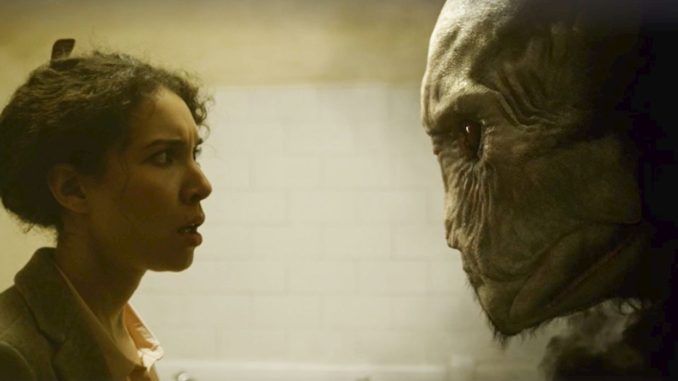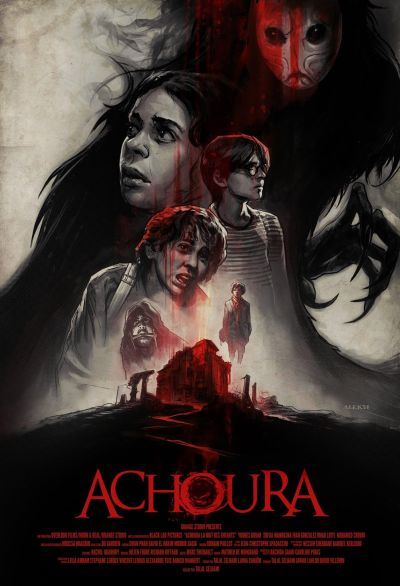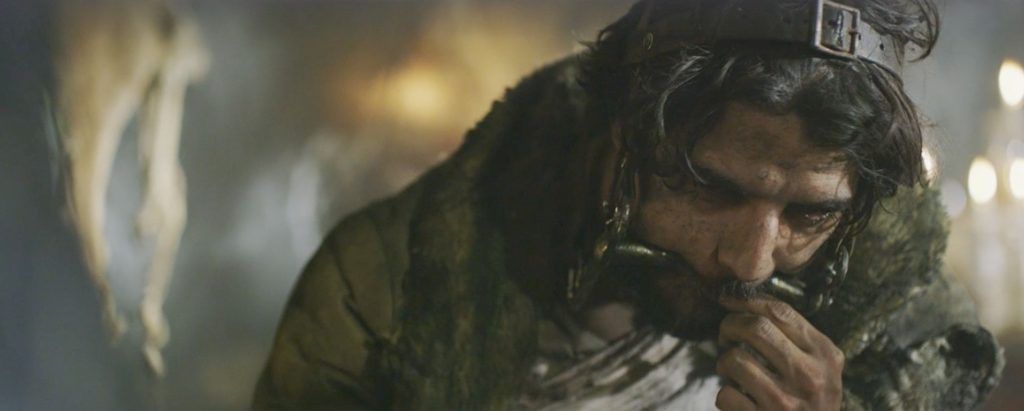
Grade: C-
Dir: Talal Selhami
Star: Sofiia Manousha, Younes Bouab, Omar Lotfi, Iván González
I think it was very nice of Stephen King to extend his famous Dollar Baby program, and allow the commercial release of this interesting Moroccan take on his novel It. Wait, what? This is not, in fact, an adaptation of the King book? Fucking North African rip-off merchants. Where is my pitchfork? That this was filmed back in 2015, a couple of years before the Andy Muschetti version, isn’t much of a defense, considering the book came out almost thirty years earlier. The similarities here are just too strong, and replacing Pennywise with a djinn, a local demonic entity is not enough to get the makers off the hook. Sprinkling Marrakesh spices onto a hot-dog does not make it Moroccan cuisine.
That’s getting ahead of ourselves. I should start with our usual Cliff Notes guide to the country and its cinema. After a few entries from countries without much film history to speak of, Morocco has more, largely thanks to its French connections. Indeed, the first film shot there was by one of the forefathers of cinema himself. Louis Lumiere made The Moroccan Goatherd there in 1897, fifteen years before it became a colony of France. Film was a popular form of entertainment, with the two thousand seater Cinema Vox, built in 1935, reported to be the largest movie theatre on the continent of Africa for a while. It was also (and remains) a popular destination for foreign productions, offering exotic locations a relatively short hop from “civilization.” However, none of Casablanca was filmed there.
 Arguably, the most famous Moroccan film is not really from Morocco. In 1952, Orson Welles’s version of Othello won the Palme d’Or at Cannes as a Moroccan production. While some of the movie had been shot in the country, according to Welles, this “was a flag of convenience, like Liberia for a ship owner,” and only came about after the production had lost its other national statuses. Amusingly, at the ceremony in Cannes, the Moroccan national anthem couldn’t be played, as was tradition, because none of the musicians knew it. The director recalls, “the band played something vaguely oriental from one of the French operettas,” and it appears, nobody knew otherwise. Or, at least, nobody of importance.
Arguably, the most famous Moroccan film is not really from Morocco. In 1952, Orson Welles’s version of Othello won the Palme d’Or at Cannes as a Moroccan production. While some of the movie had been shot in the country, according to Welles, this “was a flag of convenience, like Liberia for a ship owner,” and only came about after the production had lost its other national statuses. Amusingly, at the ceremony in Cannes, the Moroccan national anthem couldn’t be played, as was tradition, because none of the musicians knew it. The director recalls, “the band played something vaguely oriental from one of the French operettas,” and it appears, nobody knew otherwise. Or, at least, nobody of importance.
Truly Moroccan cinema started after the country won its independence from France in 1956. But horror films appear to be few and far between. The IMDb lists barely a handful, including a previous film by Selhami, Mirages. Kandisha, made in 2008, was the first, and 2022’s La Dame Des Ténèbres the most recent, while Achoura appears to be the first “monster movie” to come out of Morocco. Although I earlier wrote witheringly about the almost ludicrous similarities to It (which we’ll get to shortly), it does at least inject a reasonable amount of local atmosphere into its plagiarism. Considering the entirely flavourless local knockoffs of Western sub-genres we’ve on occasion had to sit through in this series, I will tolerate something which is at least wearing a North African sweater and scarf.
The core concept underneath is pure King. A group of friends are brought back together, to face the terrifying creature whom they previously encountered as kids. It was an incident which they have tried to put behind them, but the realization the creature is back, and hunting once more, forces them to return to the scene of their childhood trauma. Yeah. Sound familiar?On the plus side, this does it all in not much more than ninety minutes, rather than taking over three hundred, in steadily diminished returns. But a major difference is the catalyst for the rematch, which here is the sudden reappearance of Samir (Lotfi), who vanished twenty-five years previously. While I get the kids may have walled off the experience, you’d think Samir’s parents might have remembered.
This is a case where the individual scenes are fine, and sometimes impressive. The problem is, they just don’t mesh into anything coherent and consistent. For example, it opens with a child bride and her young boyfriend running away from (I presume) her husband. Perhaps to a local audience, this kind if thing is normal enough to make sense. But to me it played as creepy, in ways I suspect the makers did not intend. Just as in It, there’s one of the group who has “kept the faith”: in this case it’s artistic Stéphane (González). Meanwhile, police detective Ali (Bouab) and teacher Nadia (Manousha) have gone through a relationship with each other, resulting in a son, and come out the other side. It just doesn’t have enough impact to make me care.
 The monster (top, in one of the rare better-lit shots), called Bougatate, is arguably better, or at least more imaginative, than It – depending on how you feel about clowns, I guess. This one has a mouth capable of splitting open far enough to get its prey’s entire head in there. At points it seemed like an ancestor of the Demigorgon from Stranger Things. The CGI used to depict it is a little variable, but generally passes muster, assisted by the half-darkness. What does work well is a sweeping orchestral score by Romain Paillot. It may not exactly be what you would call authentically Moroccan, yet I’d be hard-pressed to call it ineffective.
The monster (top, in one of the rare better-lit shots), called Bougatate, is arguably better, or at least more imaginative, than It – depending on how you feel about clowns, I guess. This one has a mouth capable of splitting open far enough to get its prey’s entire head in there. At points it seemed like an ancestor of the Demigorgon from Stranger Things. The CGI used to depict it is a little variable, but generally passes muster, assisted by the half-darkness. What does work well is a sweeping orchestral score by Romain Paillot. It may not exactly be what you would call authentically Moroccan, yet I’d be hard-pressed to call it ineffective.
In the end though, this is largely forgettable, as is proven when I mentioned the title to Chris, less than two days after we watched it. The resulting blank expression suggested it had made absolutely no impact on her at all, and this was confirmed after further discussion. The only element which she remembered was the children running through a field, and our resulting discussion of why the crop for such scenes always seems to be corn in horror movies. [I reckon the reason is because its height allows film-makers to conceal just about anything. You can’t hide your monster in a potato field] She remembers nothing else, and sadly, I’m not going to blame her for that.
This review is part of our October 2024 feature, 31 More Countries of Horror.
